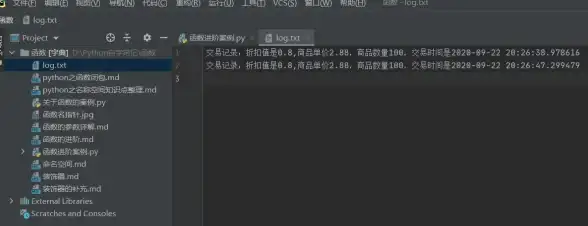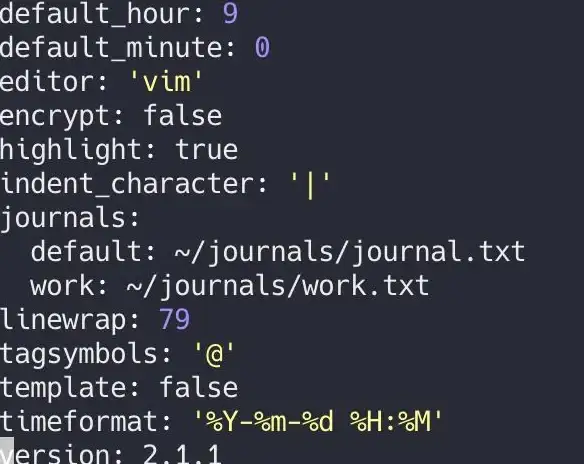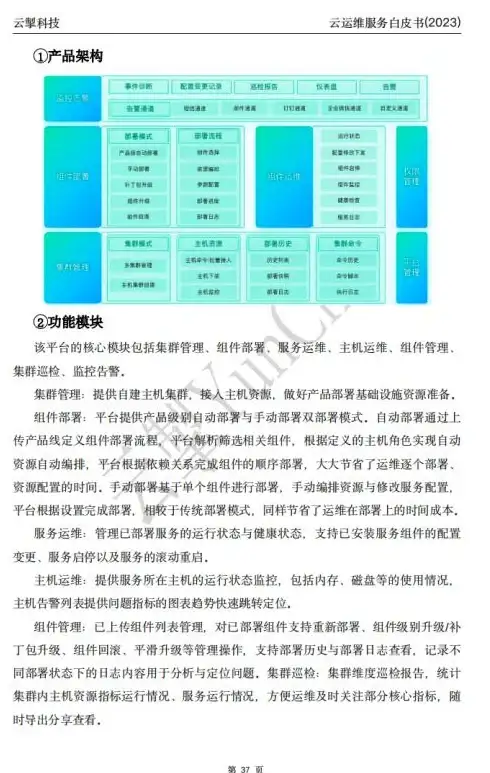上一篇
日志管理|数据库存储 Python实现日志写入数据库的示例,Demo,日志数据存储到数据库demo
- 问答
- 2025-08-04 17:39:19
- 4
Python实现日志写入数据库的完整指南
当日志遇上数据库:一个开发者的日常痛点
上周三凌晨2点,我被刺耳的报警短信惊醒——生产环境某个核心服务挂了,我睡眼惺忪地打开终端,准备查看日志定位问题,却发现日志文件早已被滚动压缩成了几十个归档包,在解压、grep、再解压的循环中,我意识到:如果这些日志能直接存到数据库里该多好!
我就来分享如何用Python将日志直接存储到数据库,让你的运维生活轻松十倍。
基础准备:选择你的武器库
在开始前,我们需要准备几个基础组件:

- Python日志模块 - 内置的
logging模块 - 数据库驱动 - 根据数据库类型选择:
- MySQL:
pymysql或mysql-connector-python - PostgreSQL:
psycopg2 - SQLite: 内置支持
- MySQL:
- 可选工具 -
SQLAlchemy(如果你喜欢ORM方式)
# 以MySQL为例,先安装必要包 pip install pymysql
直接写入数据库(简单粗暴版)
让我们先从最直接的方式开始——创建一个自定义的日志处理器,直接将日志写入MySQL。
import logging
import pymysql
from logging import Handler
class MySQLHandler(Handler):
def __init__(self, host, user, password, db, table):
super().__init__()
self.host = host
self.user = user
self.password = password
self.db = db
self.table = table
self.connection = None
self.cursor = None
self.connect()
def connect(self):
try:
self.connection = pymysql.connect(
host=self.host,
user=self.user,
password=self.password,
database=self.db,
charset='utf8mb4'
)
self.cursor = self.connection.cursor()
except Exception as e:
print(f"数据库连接失败: {e}")
def emit(self, record):
if not self.connection or not self.connection.open:
self.connect()
try:
log_time = self.formatTime(record)
sql = f"""
INSERT INTO {self.table}
(log_time, level, message, module, func_name, line_no)
VALUES (%s, %s, %s, %s, %s, %s)
"""
self.cursor.execute(sql, (
log_time,
record.levelname,
record.getMessage(),
record.module,
record.funcName,
record.lineno
))
self.connection.commit()
except Exception as e:
print(f"日志写入失败: {e}")
self.connection.rollback()
# 创建数据库表(如果不存在)
def create_log_table(host, user, password, db, table):
conn = pymysql.connect(
host=host, user=user, password=password, database=db
)
with conn.cursor() as cursor:
cursor.execute(f"""
CREATE TABLE IF NOT EXISTS {table} (
id INT AUTO_INCREMENT PRIMARY KEY,
log_time DATETIME NOT NULL,
level VARCHAR(10) NOT NULL,
message TEXT,
module VARCHAR(50),
func_name VARCHAR(50),
line_no INT,
INDEX idx_log_time (log_time),
INDEX idx_level (level)
)
""")
conn.commit()
conn.close()
# 使用示例
if __name__ == "__main__":
# 先创建表
create_log_table(
host="localhost",
user="your_username",
password="your_password",
db="log_db",
table="app_logs"
)
# 配置日志
logger = logging.getLogger("db_logger")
logger.setLevel(logging.INFO)
# 添加我们的MySQL处理器
mysql_handler = MySQLHandler(
host="localhost",
user="your_username",
password="your_password",
db="log_db",
table="app_logs"
)
mysql_handler.setFormatter(logging.Formatter('%(asctime)s - %(levelname)s - %(message)s'))
logger.addHandler(mysql_handler)
# 测试日志
logger.info("这是一条测试日志,将被存入数据库")
logger.error("模拟一个错误日志", extra={"some_context": "额外信息"})
使用SQLAlchemy(优雅ORM版)
如果你更喜欢ORM方式,或者需要支持多种数据库,SQLAlchemy是个不错的选择。
from sqlalchemy import create_engine, Column, Integer, String, DateTime, Text
from sqlalchemy.ext.declarative import declarative_base
from sqlalchemy.orm import sessionmaker
import logging
from logging import Handler
from datetime import datetime
Base = declarative_base()
class LogEntry(Base):
__tablename__ = 'app_logs'
id = Column(Integer, primary_key=True)
timestamp = Column(DateTime, default=datetime.now, index=True)
level = Column(String(10), index=True)
message = Column(Text)
module = Column(String(50))
func_name = Column(String(50))
line_no = Column(Integer)
def __repr__(self):
return f"<LogEntry {self.timestamp} {self.level} {self.message[:20]}>"
class SQLAlchemyHandler(Handler):
def __init__(self, db_url):
super().__init__()
self.engine = create_engine(db_url)
Base.metadata.create_all(self.engine)
Session = sessionmaker(bind=self.engine)
self.session = Session()
def emit(self, record):
try:
log_entry = LogEntry(
level=record.levelname,
message=self.format(record),
module=record.module,
func_name=record.funcName,
line_no=record.lineno
)
self.session.add(log_entry)
self.session.commit()
except Exception as e:
print(f"日志记录失败: {e}")
self.session.rollback()
finally:
self.session.close()
# 使用示例
if __name__ == "__main__":
# 配置日志
logger = logging.getLogger("alchemy_logger")
logger.setLevel(logging.DEBUG)
# 添加SQLAlchemy处理器
# 支持多种数据库:
# MySQL: mysql+pymysql://user:pass@host/dbname
# PostgreSQL: postgresql+psycopg2://user:pass@host/dbname
# SQLite: sqlite:///log.db
db_handler = SQLAlchemyHandler("mysql+pymysql://your_username:your_password@localhost/log_db")
db_handler.setFormatter(logging.Formatter('%(asctime)s - %(levelname)s - %(message)s'))
logger.addHandler(db_handler)
# 测试日志
logger.debug("这是一条DEBUG级别日志")
logger.info("用户登录成功", extra={"user_id": 123})
高级技巧:处理性能与可靠性问题
直接写入数据库虽然方便,但在高并发场景下可能会遇到性能问题,以下是几个优化建议:
- 批量写入:改为积累一定数量的日志后批量提交
- 异步写入:使用队列或后台线程处理日志写入
- 故障转移:当数据库不可用时,临时写入本地文件
import queue
import threading
class AsyncDBHandler(Handler):
def __init__(self, host, user, password, db, table, batch_size=10):
super().__init__()
self.host = host
self.user = user
self.password = password
self.db = db
self.table = table
self.batch_size = batch_size
self.log_queue = queue.Queue()
self.worker_thread = threading.Thread(target=self._worker, daemon=True)
self.worker_thread.start()
def _worker(self):
batch = []
conn = pymysql.connect(
host=self.host,
user=self.user,
password=self.password,
database=self.db
)
while True:
try:
# 从队列获取日志记录
record = self.log_queue.get(timeout=5)
if record:
batch.append(record)
# 达到批量大小或超时后提交
if len(batch) >= self.batch_size or (batch and record is None):
with conn.cursor() as cursor:
sql = f"""
INSERT INTO {self.table}
(log_time, level, message, module, func_name, line_no)
VALUES (%s, %s, %s, %s, %s, %s)
"""
cursor.executemany(sql, batch)
conn.commit()
batch = []
if record is None: # 终止信号
break
except Exception as e:
print(f"日志批量写入失败: {e}")
conn.rollback()
# 简单重连机制
try:
conn.ping(reconnect=True)
except:
conn = pymysql.connect(
host=self.host,
user=self.user,
password=self.password,
database=self.db
)
conn.close()
def emit(self, record):
try:
log_entry = (
self.formatTime(record),
record.levelname,
record.getMessage(),
record.module,
record.funcName,
record.lineno
)
self.log_queue.put(log_entry)
except Exception as e:
print(f"无法加入日志队列: {e}")
def close(self):
self.log_queue.put(None) # 发送终止信号
self.worker_thread.join()
super().close()
日志查询:从数据库获取价值
日志存入数据库后,你可以轻松执行复杂查询:

def query_logs(level=None, start_time=None, end_time=None, keyword=None):
conn = pymysql.connect(host="localhost", user="your_username",
password="your_password", database="log_db")
query = f"SELECT * FROM app_logs WHERE 1=1"
params = []
if level:
query += " AND level = %s"
params.append(level)
if start_time:
query += " AND log_time >= %s"
params.append(start_time)
if end_time:
query += " AND log_time <= %s"
params.append(end_time)
if keyword:
query += " AND message LIKE %s"
params.append(f"%{keyword}%")
query += " ORDER BY log_time DESC LIMIT 100"
with conn.cursor(pymysql.cursors.DictCursor) as cursor:
cursor.execute(query, params)
results = cursor.fetchall()
conn.close()
return results
# 示例查询
# error_logs = query_logs(level="ERROR", start_time="2025-08-01")
# login_logs = query_logs(keyword="用户登录")
选择适合你的方案
- 简单项目:直接使用第一个基础方案
- 中型项目:考虑SQLAlchemy版本,便于维护和扩展
- 高性能需求:使用异步批量写入方案
日志是系统健康的晴雨表,把它们存到数据库不仅方便查询分析,还能为后续的日志监控、报警系统打下基础,下次再遇到凌晨报警,你就能优雅地从数据库快速定位问题,而不是在成堆的日志文件里大海捞针了!
现在就去试试吧,让你的日志管理更上一层楼!
本文由 塞阳 于2025-08-04发表在【云服务器提供商】,文中图片由(塞阳)上传,本平台仅提供信息存储服务;作者观点、意见不代表本站立场,如有侵权,请联系我们删除;若有图片侵权,请您准备原始证明材料和公证书后联系我方删除!
本文链接:https://vps.7tqx.com/wenda/536269.html









发表评论